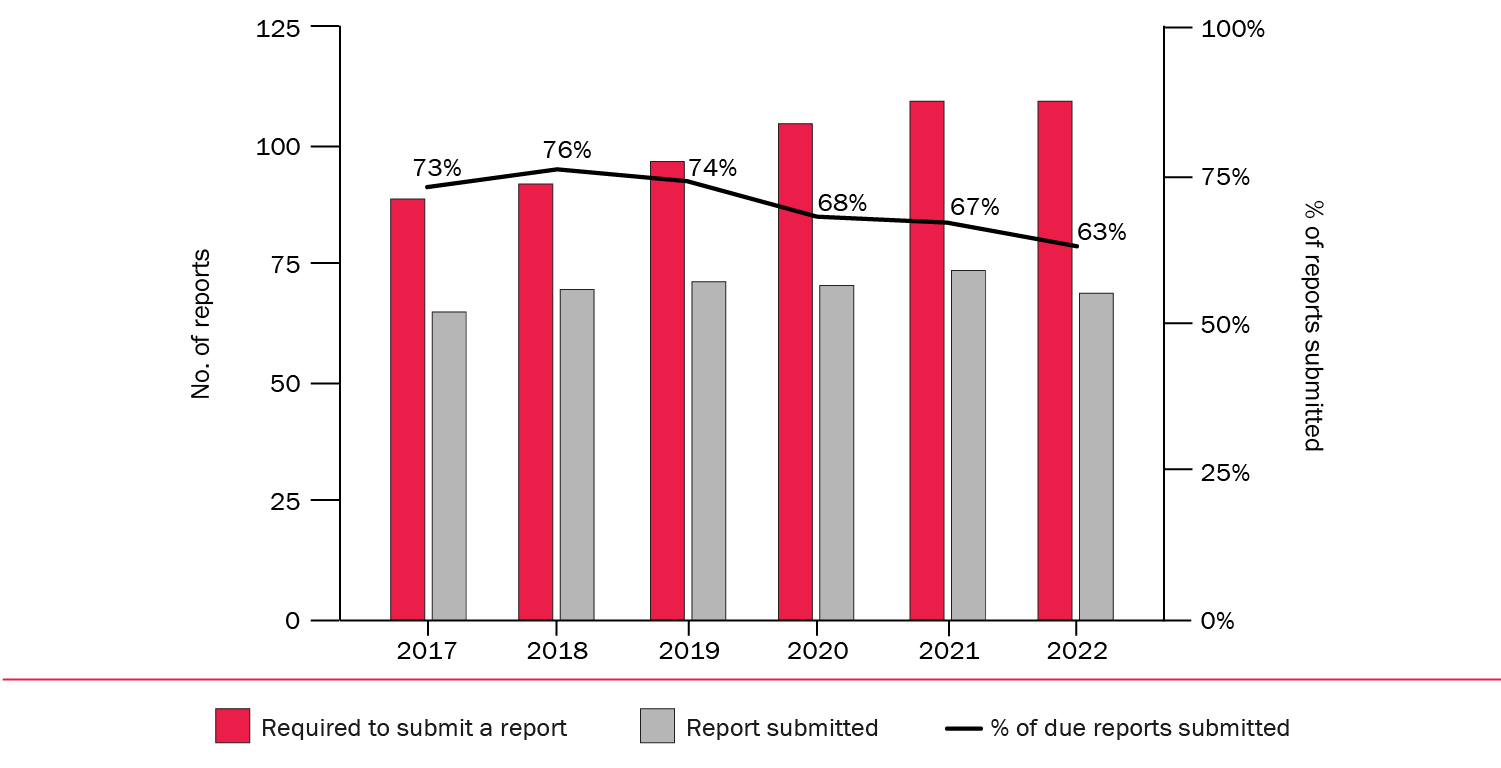12. Dual-use and arms trade controls
Overview, Giovanna Maletta
I. The Arms Trade Treaty, Giovanna Maletta and Lauriane Héau
II. Multilateral arms embargoes, Mark Bromley and Pieter D. Wezeman
III. The multilateral export control regimes, Kolja Brockmann and Lauriane Héau
IV. Developments in the European Union’s dual-use and arms trade controls, Mark Bromley and Giovanna Maletta
Global, multilateral and regional efforts continued in 2023 to strengthen controls on the trade in military and dual-use items relevant for conventional arms and chemical, biological and nuclear weapons and their delivery systems. However, the Russia–Ukraine war continued to affect multilateral cooperation in the field of export controls. States in the West expanded the set of sanctions measures and associated arms embargoes on Belarus and Russia, and intensified efforts to coordinate and strengthen the enforcement of the arms embargoes, including through the European Union–United States Trade and Technology Council and the establishment of the ‘Export Enforcement Five’ partnership in June.
Trade controls can also be used to achieve a wider set of foreign policy and security objectives. In 2023 the Netherlands and Japan adopted national controls on transfers of semiconductors after close coordination with the USA, while the European Commission published a draft European Economic Security Strategy that included a strong emphasis on adopting new and more harmonized controls on transfers of emerging technologies.
Number of Arms Trade Treaty states parties submitting annual reports, 2017–22
The Arms Trade Treaty
The ninth Conference of States Parties to the 2013 Arms Trade Treaty (ATT) in August 2023 focused on the role of industry in a responsible international arms trade. States parties discussed the revision of the format and scope of ATT meetings and effective treaty implementation. The treaty continued to experience financial challenges and a decline in reporting. There were no new states parties in 2023.
Multilateral arms embargoes
During 2023, 14 United Nations arms embargoes and 22 European Union (EU) arms embargoes were in force. No new multilateral arms embargoes were imposed in 2023, although the UN embargo on Somalia was repurposed as an arms embargo that applies exclusively to the al-Shabab armed group. Disagreements remained—mainly between China and Russia (along with several African states) on one side, and the other permanent UN Security Council members on the other—over the general use of sanctions and the particular controls on arms procurement by government forces in the Central African Republic, South Sudan and Sudan. The efficacy of UN arms embargoes remained under strain in 2023, amid widespread allegations that Russia procured weapons from North Korea and the continued ineffectiveness of the embargo on Libya.
Export control regimes
The repercussions of the Russia–Ukraine war continued to have a significant impact on the work of the four multilateral export control regimes—the Australia Group (on chemical and biological weapons), the Missile Technology Control Regime,
the Nuclear Suppliers Group and the Wassenaar Arrangement on Export Controls for Conventional Arms and Dual-use Goods and Technologies. The latter three regimes, which include Russia as a participating state, continued to experience difficulties in achieving consensus on key decisions, but were still able to make incremental updates to the control lists and move technical discussions forward.
EU controls
To implement the four multilateral export control regimes in its single market, the EU has established a common legal basis for controls on the export, brokering, transit and trans-shipment of dual-use items, software and technology, as well as, to a certain extent, military items. The adoption of measures to implement the 2021 version of the EU dual-use regulation, such as the development of guidelines on the implementation of controls on cybersurveillance items and reporting obligations, was still under way in 2023. The European External Action Service and EU member states continued work on the review of the EU common position on arms exports, which is due to be completed in 2024.
